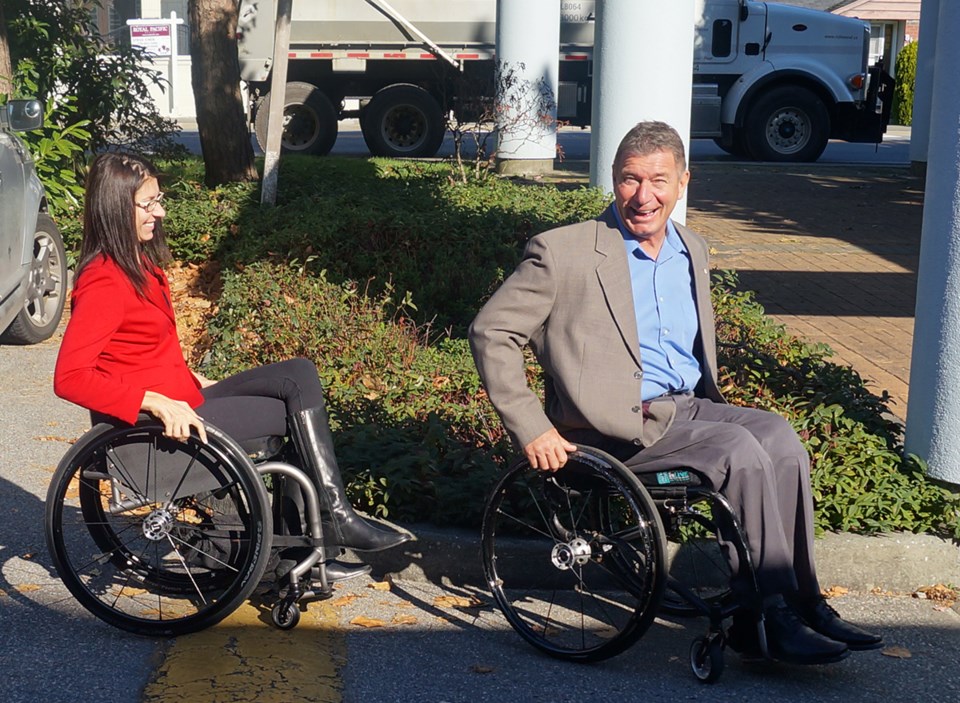It should come as no surprise that disabilities champion Rick Hansen has made Richmond ground zero for promoting progressive accessibility policies for the disabled — it is his hometown, after all.
On Friday, Hansen and Minister of Social Development and Social Innovation Michelle Stilwell participated in an accessibility assessment at South Arm Community Centre to promote the B.C. government’s partnership with the Rick Hansen Foundation to create an objective framework for assessing how well businesses and public spaces cater to a full range of disabled people, who may be employees or customers.
Hansen and Stilwell — both of whom use wheelchairs — shared a laugh as they rode over a speed bump while assessing the centre’s parking lot accessibility.
“That’s where the idea of slowing down traffic wasn’t intersected with the need for accessibility. That speed bump could have been a little further back, behind the wheelchair spot,” noted Hansen.
Over the last year, with $240,000 of funding from Stilwell’s ministry, the foundation completed 75 assessments of businesses and public facilities throughout the province, including several in Richmond.
According to the results, 52 of the places tested “favourably.”
Hansen said it is important for the government to create objective measurements.
He said he wants his foundation to be a third party working with government to create those standards. As such, his foundation created a team of assessors.
“They are actually measuring the level of accessibility. People can do certain things for accessibility and think that’s it, but in reality you may leave a group behind,” said Hansen.
Accessibility assessments look at various factors of a building. For instance, do curbs have ramps for the physically disabled? Are there physical markers on the sidewalks for blind people? Is there appropriate signage for the hearing impaired? Are fire escape routes adequate?
“There’s a lot of specifics that are absolute standards and we need a qualified team who are trained and people can trust to cover all the ground,” said Hansen.
South Arm scored a 4.3/5 on its assessment, which can be found online at Planat.com. People are invited to submit their own reviews in a comment section, as well.
Some factors aren’t as obvious, as noted by accessibility specialist Laetitia Mfamobani who noted South Arm’s entrance has a low noise level, which is good for blind people, such as herself.
Stilwell said it is important to work with the private sector and non-profit groups in order to meet B.C.’s goal of becoming “the most progressive place in Canada for people with disabilities.”
The government has set 2024 to meet that goal.
“It’s about having standards in place and ensuring that people are meeting those standards and seeing how they can improve,” said Stilwell.
Making workplaces more accessible is also part of the government’s broader job creation strategy as it diversifies the workforce, noted Stilwell.
In a news release, the ministry stated 550,000 British Columbians self-identify as having a disability. And according to the Royal Bank of Canada disabled people have an estimated spending power of $25 billion annually across the country.
But barriers continue to exist.
Mfamobani noted that despite post-secondary education, she found it difficult to find a job.



